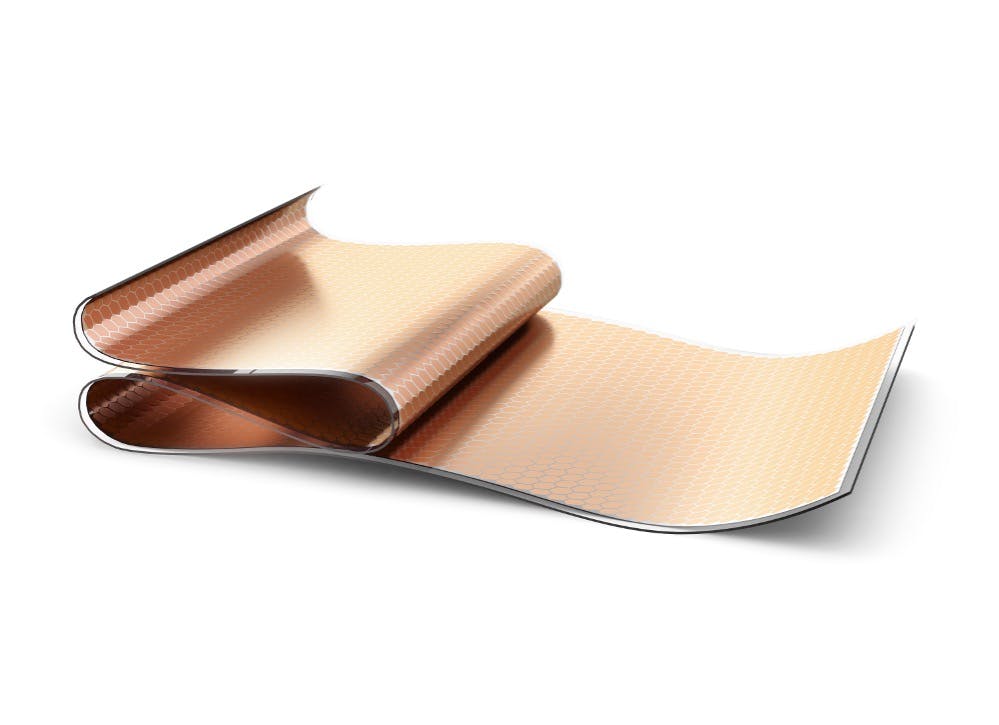What We Do
Material Innovation for organic electronics
CREDOXYS develops high-performance materials for the next generation of organic electronic technologies, from the first idea on the whiteboard to scale-up in chemical production. Our molecules greatly improve the capabilities of organic semiconductors across a wide range of applications, including lighting, displays, photovoltaics, sensing, and energy storage.

Key Materials
HOW WE MAXIMIZE PERFORMANCE
Organic electronic devices such as OLEDs or organic solar cells (OPV) are composed of multiple layers. The light-emitting or light-absorbing layer is flanked by charge transport layers that optimize electrical and optical performance.
CREDOXYS develops a variety of materials for transport and absorbing layers, tailored to address specific customer challenges and designed for mass production.
Our flagship products are p-dopants, which are essential for enhancing the power efficiency. p-Dopants significantly increase the electrical current through the organic layers and allow for further optimizations of the device structure. In consequence, less power is needed to light-up a display and more power is generated in a solar cell.
Our Doping Technology
A UNIQUE MATERIAL PLATFORM
CREDOXYS has developed entirely new and superior material platforms for p- and n-dopants, enabling organic electronic applications to exceed previous limitations. Our technology is secured by an expanding portfolio of patents in key global markets.
Strong
Our materials’ exceptional doping strength gives panel makers a competitive edge for the next generation of OLEDs featuring novel blue emitters, for maximal performance with minimal power consumption. Additionally, our stronger dopants enable organic solar cells to generate more power.
Transparent
All of our dopants offer the great advantage of being highly transparent, allowing more light to pass through and exit the OLED, for higher brightness and efficiency. This transparency also enhances energy harvesting in solar cells and improves the sensitivity of sensors.
Tunable
Thanks to our modular approach, we can tune the electrical and processing properties of our materials to meet the specific requirements of various customers and applications.
The Market
The next generation of OLED and OPV
Our cutting-edge materials target multiple high-growth markets. OLED display materials alone represents a $2 billion market, with rapid expansion in the IT segment. Organic photovoltaics (OPV) is poised for significant growth and is expected to eventually surpass OLEDs in material demand. Additionally, there is substantial potential in the emerging fields of organic sensors and transistors.

OLED Display
Organic light-emitting diodes (OLEDs) are ultra-thin light sources that can be flexible and semi-transparent, offering a wealth of design options. Displays based on OLED deliver stunning image quality thanks to self-illuminating pixels, creating perfect blacks, maximum contrast, and high-purity colors.
Unsurprisingly, OLED is the preferred display technology for smartphones, with over 600 million yearly shipped panels . It is steadily replacing LCDs in displays of all sizes, ranging from smartwatches, tablet, and laptops to automotive displays, gaming monitors, and televisions. OLED is also emerging as the first choice for innovative applications such as mixed-reality glasses.
CREDOXYS p-dopants enhance the efficiency, color purity, and lifespan of OLED displays while reducing power consumption. This advancement will accelerate the adoption of OLED technology for larger screens, unlocking significant market potential.


Organic Photovoltaics
With a very low carbon payback time and no dependence on rare materials, organic photovoltaics (OPV) can make a significant contribution to sustainable power generation.
Over the past two decades, the efficiency and durability of OPV have greatly improved. Mass production is now underway, with plans to significantly ramp up capacity in the coming years.
Organic solar cells are lightweight, flexible, and transparent. Consequently, they can be used on surfaces unsuitable for traditional photovoltaic modules, such as lightweight ceilings, curved surfaces, or transparent glass facades. With OPV, you can convert almost any surface into a small power plant.
To increase the adoption of this green energy solution, the performance of organic photovoltaics needs to be enhanced by developing and integrating novel superior materials. With our transparent, strong, and highly stable p- and n-dopants, we increase the power efficiency of organic solar cells and the production yield.
Carbon Savings
SMALL MOLECULES – BIG IMPACT
The next generation of OLED displays will introduce novel blue emitter systems, delivering up to four times the efficiency of current technologies and significantly reducing power consumption. To fully unlock this potential, advanced strong p-dopants are essential. As OLED technology increasingly dominates the display market, the opportunity for substantial carbon savings is immense.
Likewise, organic photovoltaics (OPV) can benefit from strong, transparent materials, boosting power generation and positioning OPV a viable mass-market complement to conventional energy sources.
Our Expertise
More than one material
Our core expertise lies in redox-active materials. Given the pivotal role of redox processes in virtually all energy conversion technologies, we leverage our knowledge and experience to provide innovative solutions for various applications, spanning from lighting, displays, photovoltaics, and sensing to energy storage.
In the future, we will build on our expertise and rich portfolio of ideas to develop additional key materials for OPV performance, such as non-fullerene acceptors and absorbers.


Ready for a
brighter tomorrow?
Get in Touch


